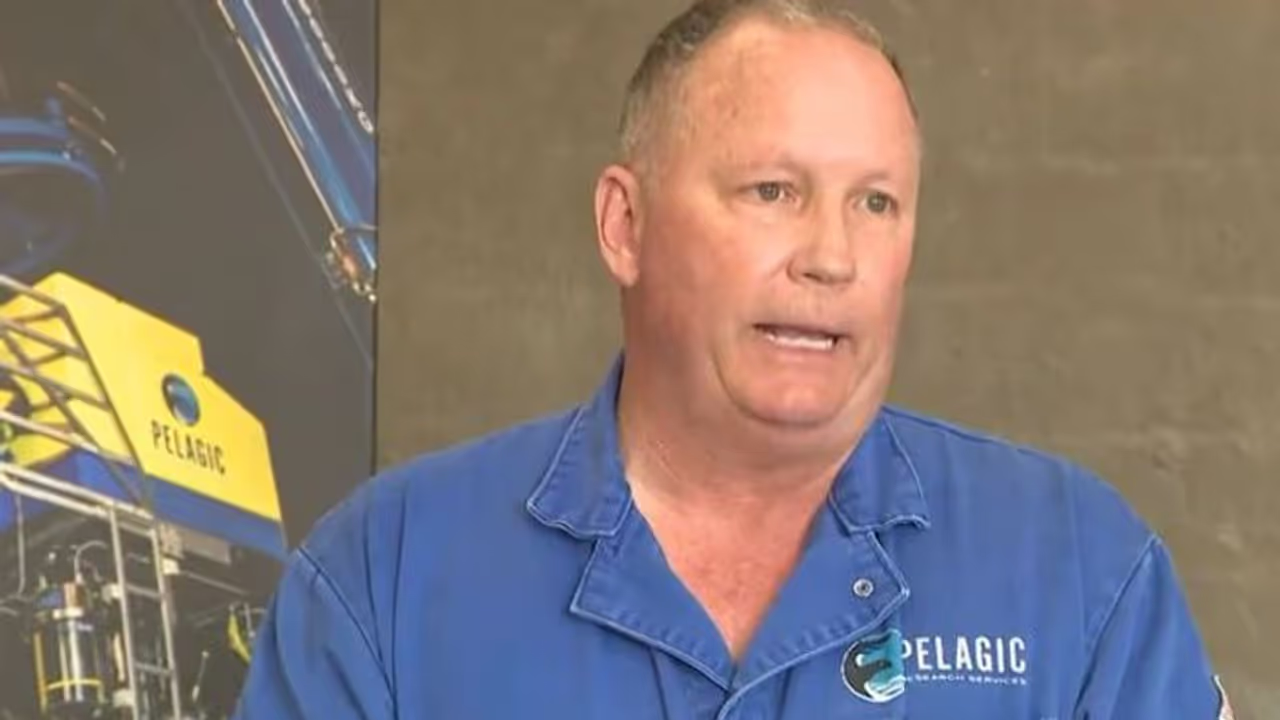Edward Cassano, CEO of Pelagic Research Services, experienced deep emotions while discussing the recovery mission that led to the discovery of the Titan submersible's debris near the Titanic's bow. The submersible lost contact during its descent to the wreckage, prompting a search and rescue operation
Emotions ran high as Edward Cassano, the CEO of Pelagic Research Services, reflected on the remarkable recovery mission that led to the identification of the missing Titan submersible's debris near the Titanic's bow. During its descent to the wreckage, the Titan submersible lost contact with OceanGate Expeditions, its tour operator, after an hour and 45 minutes, and the vessel was reported missing eight hours later.

Cassano, deeply moved by the challenging and emotional nature of the mission, highlighted that Pelagic Research Services specializes in supporting in-depth research and scientific endeavours. Their primary focus lies in the field of deep-sea science, having collaborated with esteemed organizations like Ocean Networks Canada and the National Oceanic and Atmospheric Administration.
The significance of Pelagic's capabilities became apparent as their advanced vehicles, capable of diving to depths of up to 6,000 meters, were uniquely positioned to respond to rescue calls. Aware of this potential, Cassano and his team were prepared for such an eventuality. On June 18 at 5:45 p.m., OceanGate Expeditions reached out to Pelagic, reporting the loss of contact with their submersible, which had five individuals on board.
Upon receiving the request to activate the Odysseus 6K, Pelagic swiftly assembled their team, with some members heading directly to St. John's, Newfoundland, while others made their way to East Aurora. The team commenced preparations and mobilization of the Odysseus on Monday, June 19. By late afternoon, the equipment had arrived at Buffalo Niagara International Airport, where two C-17 aircraft awaited, and a third was en route.
At 4 a.m. on June 20, the team began loading the equipment onto the three C-17s and embarked on their journey, arriving in St. John's in the afternoon. Within a span of six hours, the Pelagic team, alongside the Odysseus, were aboard the Horizon Arctic ship, ready for the search-and-rescue mission. During transit, all components of the Odysseus were meticulously assembled and tested to ensure immediate deployment upon reaching the last known location of the Titan.
Arriving at the site in the early morning of June 22, Cassano described the launch of the Odysseus from the back deck, descending towards the seafloor at an accelerated rate of 35 meters per minute, surpassing its normal speed of 25 meters per minute.
"Our rescue plan aimed to quickly latch onto Titan upon its discovery and commence the recovery operation," Cassano explained. Regrettably, shortly after arriving on the seafloor, the team discovered the debris of the Titan submersible. While diligently documenting the site, the mission transitioned from a rescue effort to a recovery endeavour by noon.
Visibly moved by the turn of events, Cassano apologized for his momentary pause, acknowledging the overwhelming emotions and fatigue experienced by the team.
He said: ‘Shortly after arriving on the seafloor, we discovered the debris of the Titan submersible. Of course, we continued to document the site, and by 12 o’clock, sadly a rescue turned into a recovery.’
He pausing, and said: "It is a lot of emotions. People are tired."
Officials confirmed that the Titan had suffered a "catastrophic implosion" after a piece of the vessel was found near the bow of the Titanic. Subsequently, the wreckage was successfully retrieved from the depths of the ocean floor.
